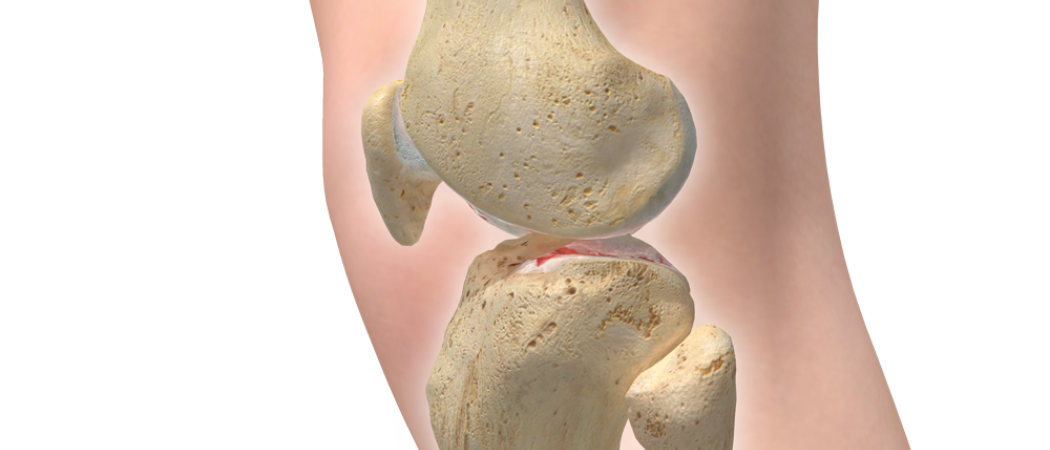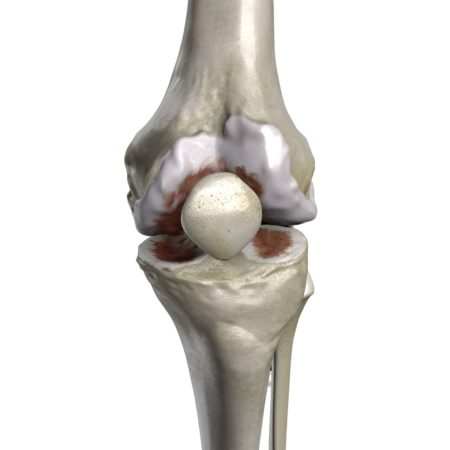Knee Arthritis

Osteoarthritis (OA) is a common disorder that affects the joints and is caused by a loss of cartilage. Cartilage is the covering over the ends of bones that serve to provide a smooth gliding surface. When this cartilage surface is lost or destroyed, the underlying bone becomes exposed. As the disease progresses, more cartilage is lost and eventually bone rubs against bone within the joint. The disease is generally progressive and often results in pain, deformity, and stiffness. These problems can have a major impact on your quality of life and activity level. Osteoarthritis affects over 27 million individuals in the United States alone.
What is the cause of osteoarthritis?
The cause of osteoarthritis is unclear, but several factors often contribute to its development including obesity, genetics, trauma/ injury, instability, and age:
- The global rise in obesity correlates with a significant rise in the frequency of arthritis, particularly in the knee joint.
- Genetics clearly plays a role and has been correlated with osteoarthritis especially in the joints of the hand and wrist.
- Trauma and injury can result in damage to the cartilage, and poor alignment of the bones can contribute to the development of osteoarthritis.
- Instability of the joints related to poor ligaments or weakness can also lead to cartilage loss and ultimately osteoarthritis.
- Age has been associated with osteoarthritis. Although the frequency of OA increases with age, it does not occur in all individuals and should not be considered inevitable.
Are there other forms of arthritis?
Although osteoarthritis is the most common form of arthritis, there are many other forms. Rheumatologists and orthopaedic surgeons study and treat the spectrum of arthritic problems including osteoarthritis and rheumatoid arthritis. Osteoarthritis results in loss of cartilage due to mechanical overload or poor underlying cartilage that is not capable of withstanding normal loads and wears out prematurely. Rheumatoid arthritis (RA), in contrast, is the most common form of inflammatory arthritis. In individuals with RA, the body’s own immune system and the joint lining (synovium) for unclear reasons destroy the joints cartilage (an autoimmune reaction). In general, both RA and OA are progressive problems that can result in cartilage loss, joint deformity, stiffness, and pain.

How do I know if I have osteoarthritis?
If you have osteoarthritis, you generally complain of pain related to activity. As the disease progresses, you might feel pain when you’re at rest and asleep at night. Additional symptoms often include joint stiffness and deformity often limiting your joint function and quality of life. In some individuals, osteoarthritis progresses slowly and can be managed for years with non-operative care. In other individuals, osteoarthritis can progress rapidly and cause severe pain – sometimes prompting the need for surgery when other measures fail to control the symptoms.
Is there a cure for hip or knee arthritis?
At this time there is no cure for osteoarthritis, and all of our non-operative measures are targeted towards treating your symptoms. Despite recent claims of injections that can “cure” your osteoarthritis, we currently have no disease modifying agents for osteoarthritis of the hip and knee. Even though there is no cure for the disease, we can treat the symptoms you’re experiencing and provide significant pain relief and improvement in function. It is important to understand the extent of your osteoarthritis and how this relates to your symptoms and treatment options.
Should I see a doctor?
If you are experiencing joint pain, it is important for you to discuss this with your doctor. A careful history, physical exam, and x-rays of the affected joint are the main ways your doctor makes an accurate diagnosis of osteoarthritis. Treatment will be based on how far the disease has progressed and how bad and how long your joint has hurt.
Depending on your findings, appropriate follow-up tests and treatment maybe prescribed. Managing osteoarthritis of the hip and knee follows a progressive algorithm that starts with the least invasive management and ending with surgery in those with an indication for a specific procedure. It is important to understand that not all hip and knee pain is osteoarthritis, and there are other diagnoses and treatment options depending on the underlying cause of your pain.
Source
This article has been written and peer reviewed by the AAHKS Patient and Public Relations Committee and the AAHKS Evidence Based Medicine Committee. Links to these pages or content used from the articles must be given proper citation to the American Association of Hip and Knee Surgeons.